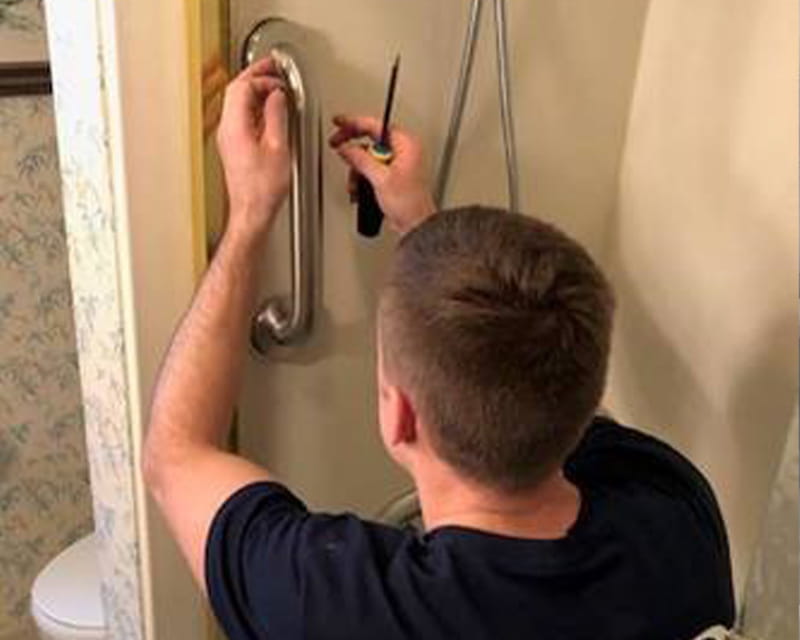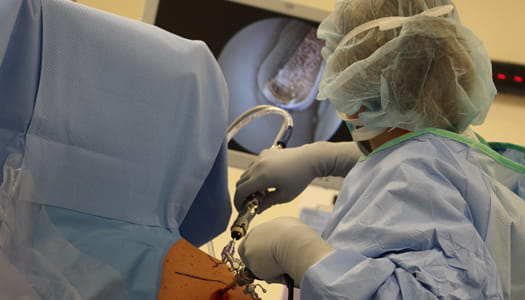
improving patient care
 For many high school science students, anatomy lessons often consist of diagrams in textbooks or animal dissection exercises. But thanks to a partnership between The Ohio State University Wexner Medical Center and Columbus’ Center of Science and Industry (COSI), high school students across the country are getting an in-depth look at human anatomy through live surgery broadcasts.
For many high school science students, anatomy lessons often consist of diagrams in textbooks or animal dissection exercises. But thanks to a partnership between The Ohio State University Wexner Medical Center and Columbus’ Center of Science and Industry (COSI), high school students across the country are getting an in-depth look at human anatomy through live surgery broadcasts.
“The program not only helps the students learn human anatomy and biology, it also gives them real-life examples of career opportunities in the medical field,” says Julie Bishop, MD, a surgeon with Ohio State Orthopaedic Surgery and Sports Medicine.
The program launched in October 2019 with Dr. Bishop, who did a live broadcast of a shoulder surgery that was viewed by a high school in Houston. The broadcasts focus on arthroscopic sports medicine procedures, which give students a unique view into some of the more common minimally invasive surgeries performed today.
Since the launch, there have been two additional live shoulder surgeries with Grant Jones, MD, and Andrew Neviaser, MD, and additional schools have been invited to watch the live procedures.
The live surgery program broadcasts video from Ohio State to various high school classrooms across the country. In the classroom, students get a live feed of the monitor the surgeon is using for the arthroscopic surgery.
“The students are seeing exactly what I’m seeing while I’m performing the surgery,” Dr. Bishop says. “I talk them through every step I’m taking, why I do each step and the instruments I’m using.”
During the surgery, students are encouraged to “buzz in” with questions for the surgeon. The questions are typically vetted by the teachers and sent to members of the COSI team who are helping with the broadcast. Then, the COSI team uses a microphone to talk to the surgeon and ask the question. The surgeon, who has a microphone connected to the live feed, repeats the question and answers it for the students.
“The questions have been great,” Dr. Bishop says, noting that students get a corresponding handout with anatomy terms to study ahead of time.
In addition to the surgery video feed, COSI uses another camera in the surgical suite to show students the different members of the surgical team.
Each member of the team gets an opportunity to talk about his or her job and the training it requires — these introductions are usually done during a portion of the procedure where the team member isn’t actively involved. Ohio State also provides a handout for the students that describe each team member and the role they play during surgery.
“Students get exposure to all the different roles you can play in medicine,” Dr. Bishop says. “They hear from physician assistants, anesthesiologists, scrub techs, nurses and medical equipment representatives.”
Dr. Bishop says she is also excited to see the program give more exposure to women working in sports medicine.
“There aren’t many women in this field, and we’re hoping that by seeing a female surgeon in sports medicine, more female students will be encouraged to take that career path,” Dr. Bishop says. “We think this program is an opportunity to show students that they can truly do anything they want.”
With three arthroscopic shoulder surgeries under their belt, Dr. Bishop says the Sports Medicine team is planning to expand the live surgery program to knee procedures sometime in the spring. From there, Dr. Bishop says she hopes they can cycle through the other arthroscopic procedures they perform in Sports Medicine, such as hip, foot or ankle surgeries.
“The feedback we’ve received from the participating schools has been great,” Dr. Bishop says. “The students and teachers love it and, on our end, it’s been a fun experience.”